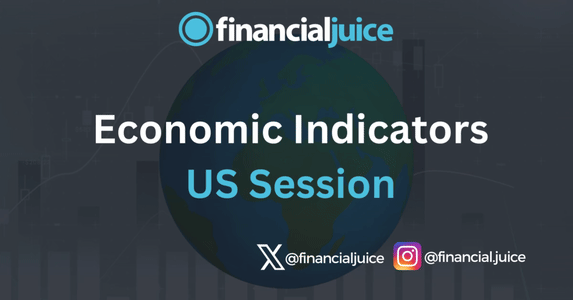
Week Ahead: Economic Indicators (US)
Hey, Traders!
For the February 5th week, here is a list of all of the major economic indicators being released during the US Session, with a brief synopsis of what they represent and what to possibly expect from the markets in reaction.
Monday 5th February
09:45 ET
US S&P Services PMI
The US S&P Services Purchasing Managers’ Index evaluates the health of the services sector in the United States.
Through surveys conducted among purchasing managers in diverse industries, such as finance, healthcare, and retail, the PMI assesses key factors like employment, new orders, and business activity.
As a diffusion index, a PMI score above 50 indicates expansion in the sector, reflecting positive economic activity, while a score below 50 suggests contraction.
What to Expect
Markets have been reacting positively to lower Services PMI data, as seen in the last release. This is most likely due to the services sector getting closer to contraction, which may aid in taming inflation.
The service sector is also an area where the Fed has said they need to see some more cooling.
10:00 ET
US ISM Services PMI
The US Institute for Supply Management Services Purchasing Managers’ Index, like the S&P Services PMI, measures the health of the services sector.
Similar to other PMI indicators, a reading above 50 indicates expansion in the services sector, while a reading below 50 suggests contraction.
What to Expect
Markets have been reacting positively to lower Services PMI data, as seen in the last release. This is most likely due to the services sector getting closer to contraction, which may aid in taming inflation.
The service sector is also an area where the Fed has said they need to see some more cooling.
14:00 ET
US Senior Loan Officer Opinion Survey
The US Senior Loan Officer Survey, conducted by the Federal Reserve, is an assessment of lending practices and standards in the United States.
This survey engages senior loan officers at banks to gather insights into changes in loan demand and the institutions’ willingness to lend across various categories, including commercial and industrial loans, residential real estate loans, and consumer loans.
By capturing data on lending conditions and standards, the Senior Loan Officer Survey aids policymakers and economists in understanding the dynamics of the credit market.
What to Expect
This release has not held as much weight as it did during the regional banking crisis last year; however, resurgent doubts from regional lenders triggered by poor earnings reports from some smaller banks this season could mean it garners some attention this time.
Markets may be looking for signs of tighter credit conditions from regional lenders, which would likely lead to weakness in banking stocks and potentially the dollar as well.
Wednesday 7th February
08:30 ET
US Trade Balance
The US Trade Balance, also known as the trade deficit or surplus, measures the difference between the value of the country’s exports and imports of goods and services.
A positive trade balance, or surplus, occurs when the value of exports exceeds imports, indicating that the country is selling more goods and services abroad than it is buying, which equates to a positive contribution to GDP.
Conversely, a negative trade balance, or deficit, means that imports surpass exports.
The trade balance is an economic indicator that reflects the competitiveness of a nation’s industries and its overall economic health.
What to Expect
The Trade Balance is unlikely to move the markets on its own.
The US, as a large importer, has been in a trade deficit since 1975.
However, a deeper-than-expected trade deficit would negatively weigh on GDP growth, which could be seen as a downside risk to inflation, which could be good for US stocks, and weak for the dollar.
10:00 ET
US Weekly EIA Crude Oil Inventories
The US Weekly Energy Information Administration Crude Oil Inventories report provides information on the total stockpile of crude oil in the United States.
It includes data on the changes in crude oil inventories, indicating whether there has been an increase or decrease in the amount of oil held in storage.
This report is crucial for assessing supply and demand dynamics in the oil market and can influence oil prices.
What to Expect
A significant buildup in inventories may indicate oversupply, putting downward pressure on prices, while a decline may suggest increased demand, potentially impacting prices in the opposite direction.
Thursday 8th February
08:30 ET
US Weekly Jobless Claims
US Weekly Initial Jobless Claims refers to the number of first-time claims for unemployment benefits filed by individuals in the United States during a given week.
It provides insights into the dynamics of the job market, with higher numbers indicating increased unemployment.
Continued Jobless Claims, on the other hand, represent the number of individuals who continue to receive unemployment benefits.
It offers information about the ongoing impact of unemployment on the workforce. Both metrics are closely monitored to assess labor market trends and economic conditions.
What to Expect
A decrease in initial and continued claims suggests an improving job market, while an increase may indicate economic challenges or contraction.
The Fed has mentioned that inflation seems to be coming down without unemployment rising meaningfully. This means that if we continue to see this trend, it is likely to bolster bets on a soft landing for the economy. This could cause strength in US stocks and weakness in the dollar.
However, if it comes in considerably higher than expected, it could be construed as an upside risk to inflation and could cause the markets to scale back their bets on Fed rate cuts this year, and cause an opposite reaction, as it did last week.
Friday 9th February
08:30 ET
Canadian Employment Change & Unemployment Rate
Canadian Employment Change is a statistical measure that reflects the net number of employed people in Canada during a specific time period, usually reported monthly.
It indicates the overall change in the number of employed individuals.
The Unemployment Rate in Canada represents the percentage of the labor force that is unemployed and actively seeking employment.
It is a key economic indicator, reflecting the health of the job market and overall economic conditions.
What to Expect
Though the Bank of Canada has held rates unchanged at 5% for four consecutive meetings, the statement at each meeting and from BoC officials has outlined that further rate hikes are not off the table in the face of upside inflation risks.
A higher-than-expected employment change and a lower-than-expected unemployment rate could represent those upside inflation risks.
Therefore, if a higher-than-expected employment change and a lower-than-expected unemployment rate are realized, we could see strength in CAD, and weakness in Canadian stocks, as markets reprice the likelihood of further Canadian rate hikes, or at least push back the timing of potential Bank of Canada rate cuts this year.
Last Week Event Breakdown
For the January 29th week, here are all of the major market-moving events affecting US indices.
Event Breakdown (Jan 29th Week) by FinancialJuice on TradingView.com
Interactive chart – Mouse over the pins for details on the event that happened there.
Light Blue = S&P 500 CFD
Dark Blue = Dollar
Dark Gray = US 2-Year Yield




